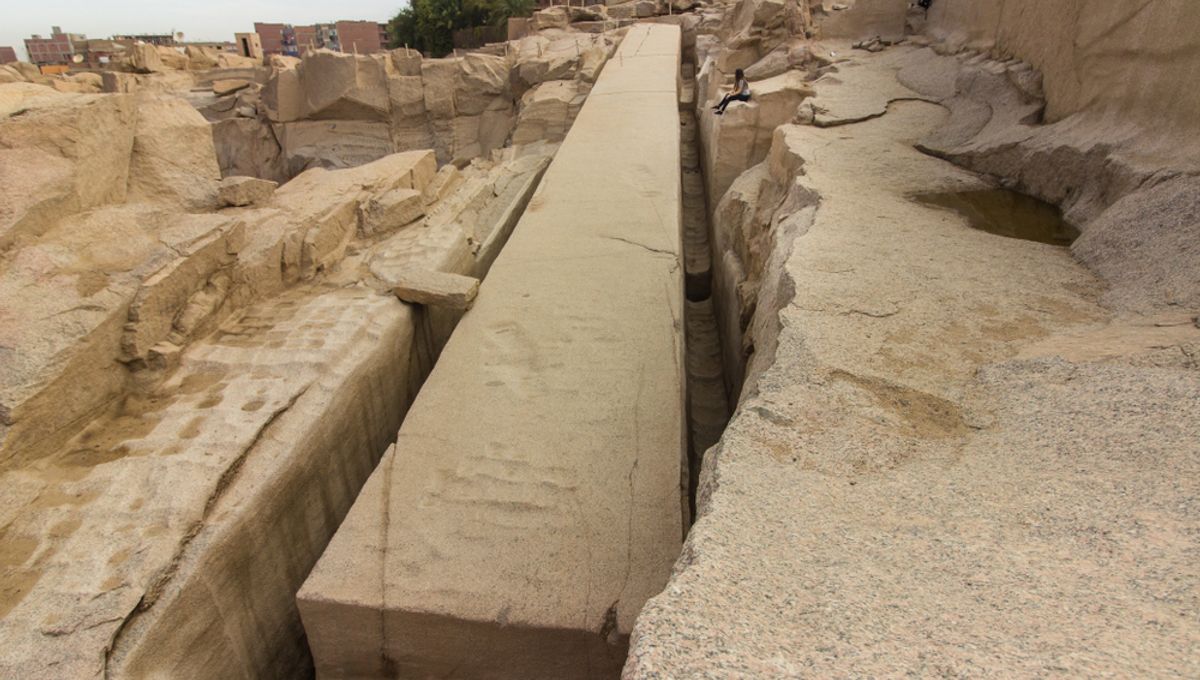
There are around 30 ancient Egyptian obelisks around the world, but which is the biggest? The tallest standing one is the Lateran obelisk, reaching a huge 45.7 meters (150 feet) tall into the sky in Rome. But there is one larger that many haven’t heard of, probably because it never quite managed to stand up: the Unfinished Obelisk in Aswan, and it is one of the most important archaeological finds for ancient Egypt to date.
The Unfinished Obelisk is the single heaviest monument ancient Egyptians ever started (that we know of) and lies in a quarry in Aswan, a city up the Nile from Cairo and Luxor. Located in one of many stone quarries in the northern region of the city, the Unfinished Obelisk sits seemingly forgotten in the rock, a huge granite carving in the floor that stretches 41.75 meters (137 feet) and dates back to around 3,500 years ago.
Current understanding of the obelisk states that it was ordered by Hatshepsut, the fifth pharaoh of the 18th Dynasty of Egypt, in 1473–1458 BCE, as a complementary obelisk to the Lateran obelisk. During construction, something clearly went wrong and huge cracks can be seen running up the stone, rendering it useless as a monument. Nearby, a partially carved obelisk base lies in the quarry, which likely would have held the upright obelisk.
If it were erected, the Unfinished Obelisk would be around one third taller than any other known obelisk, with the Lateran only reaching 32 meters (105 feet) high without its current base. Weighing in at an astonishing 1,168 tonnes, the giant chunk of granite would have been a feat of engineering to even move off of the ground, let alone stand upright, leading to many wondering how the ancient civilization managed it.
It is thought that the Egyptians would roll the obelisk onto sleds, which would be transported down the Nile banks and onto boats that would carry the monuments downriver to larger settlements. Once in the desired position, the workers would use a large hill with a steady incline and pull the obelisk up with ropes and pulleys until it reached a ridge, where they would slowly lower it down so the obelisk would pivot upright. Such techniques have been described in papyrus, and the Egyptians moved incredibly heavy stones for the construction of pyramids, so it was definitely possible.
While the monument never quite made it upright, its half-finished nature makes it an invaluable tool to decipher the stonecutting techniques of ancient Egyptian people. Chip marks can be seen along the edges of the granite and ochre lines guided the workers where they were cutting, much like a modern tradesperson marks with a pencil.
Finished pieces are brilliant, but a glimpse into the inner workings of an ancient monument’s creation is priceless, making the Unfinished Obelisk an incredible sight to behold – luckily, the whole area is now an open-air museum and can be visited by tourists.
Source Link: 3,500-Year-Old Unfinished Obelisk Would Dwarf Other Egyptian Monuments, If It Were Finished